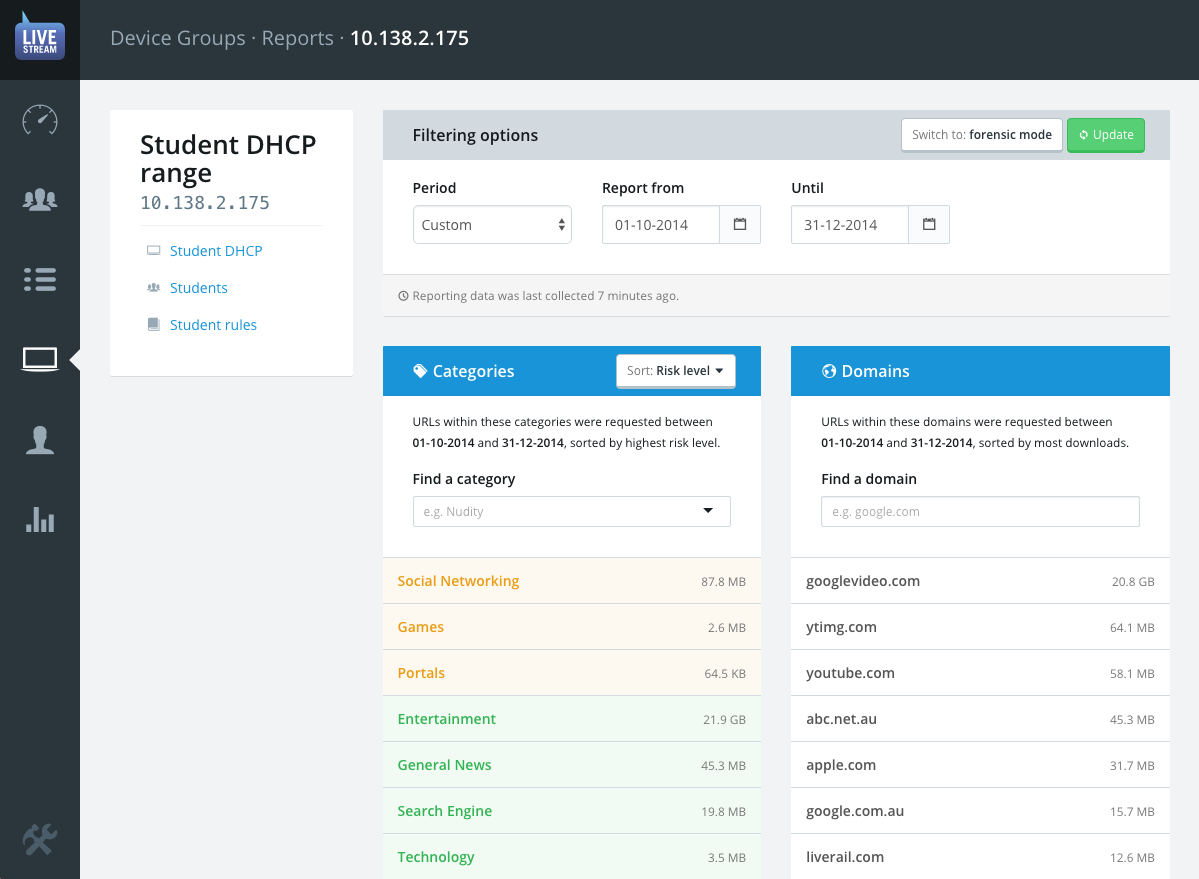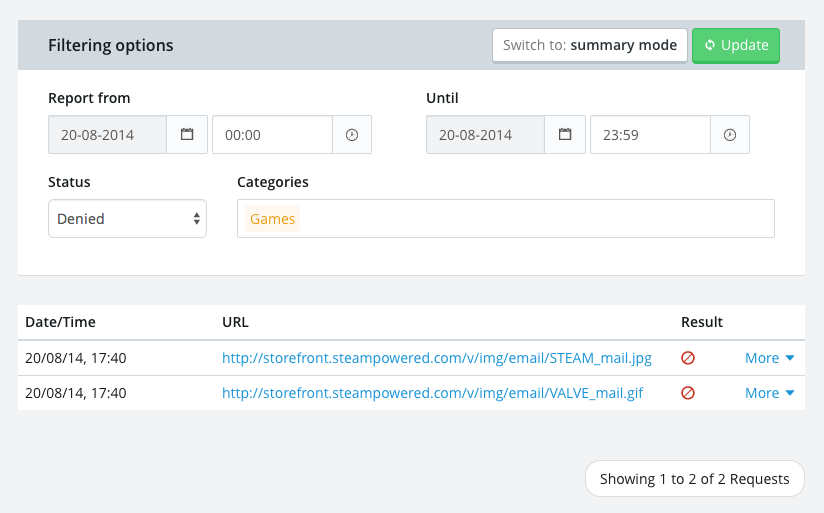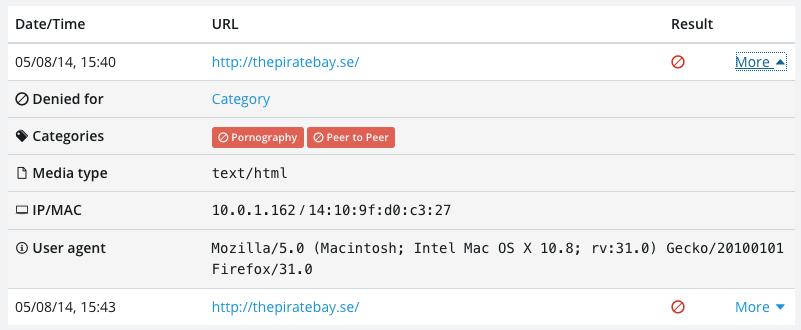Per-device Reports
LiveStream 5 provides the ability to report on the web browsing activity of specific devices based on their IP address or MAC address.
Even when your Device Group configuration uses very broad device identifiers, such as large subnets or ranges, a per-device report lets you view the web browsing history of specific individuals.
From the Devices index, click the Activity report button in the page header.
Within the dialogue, specify the device you want to report on by its IP or MAC address and click the Report button.
This only works for devices in your device groups — to report on user activity go to the Users section.
You will now be presented with the per-device report for your specified device.
ProTip: Per-device reports for static IP address and MAC address device IDs can be launched directly from their corresponding entry in their Device Group.
Per-device reports can be viewed in one of two modes:
Summary mode — breaks down the activity by categories and domains to give a high-level overview for the time period.
Forensic mode — shows each individual URL that the device requested during the time period.
When you generate a per-devuce report for the first time the time period will default to the current date e.g. it will show just today's usage until you customise it.
We recommend reading about what constitutes a request and a URL in the List Group entries section before continuing
Summary mode
Summary mode is selected by default when you first open the reports for a device. This provides a basic overview of the device's activity grouped by categories and domains (websites) and sorted by highest number of requests.
Select your time period using the report from and until date fields.
The results will automatically update to reflect your chosen time period.
You will be presented with lists of the website categories and domains that are were requested the most by this device during specified time period.
ProTip: You can quickly find any domain that a device accessed using the find a domain field, regardless of how high it is in the list.
If you wish to drill down to view the the specific URLs that were requested within a category or domain, select from the list and the system will generate a new forensic report for you using your chose time period and filtered by the category or domain you selected.
Forensic mode
As exemplified below, you will typically enter forensic mode by by drilling down from summary mode which will pre-populate your filtering options. However, you may also skip directly into forensic mode and customise the filters directly.
When generating forensic reporting data there a number of controls to choose from:
From and Until times can be edited to an accuracy of one minute via the keyboard using a
hh:mmformat. These time inputs use a twenty-four hour clock.Status filters the requests by their result e.g. whether the request was allowed or denied. By default all results will be included.
The (optional) categories field allows you to filter the results for just the specific website categories you are interested in. LiveStream will auto-suggest categories as you type, press enter to select one or more.
Click the reload button to apply your filtering options and load the latest data.
Forensic details
Within forensic mode all the results are displayed by the date and time, URL and result (allowed or denied). Even more details can be revealed about a request by clicking the more link.
These additional forensic details include:
Denied for — only displayed if the request was denied. The value will link to the Policy Set rule that was responsible for the denial, in case you wish to change it.
Categories — each category that the URL was classified as. If a category resulted in the request's denial it will contain a banned icon (pictured above).
Media type — The type of file requested e.g. image, text, video, audio etc.
IP/MAC — The IP and MAC address of the network interface where the request originated. The MAC address, where available, should be unique to the hardware of the specific device that made the request.
User agent — identifies the browser or application from which the request was made as well as the operating system environment. This can be useful for diagnosing unexpected behaviours experienced by devices.
A clear domain filter action is available if you are filtering by domain.



